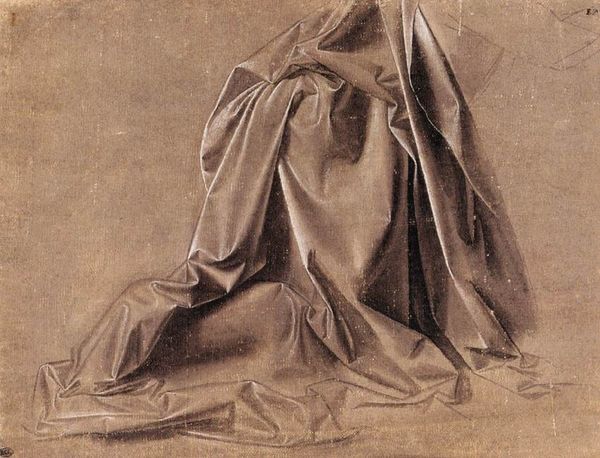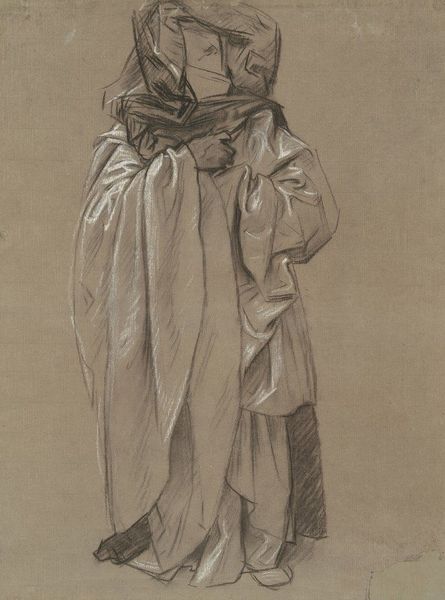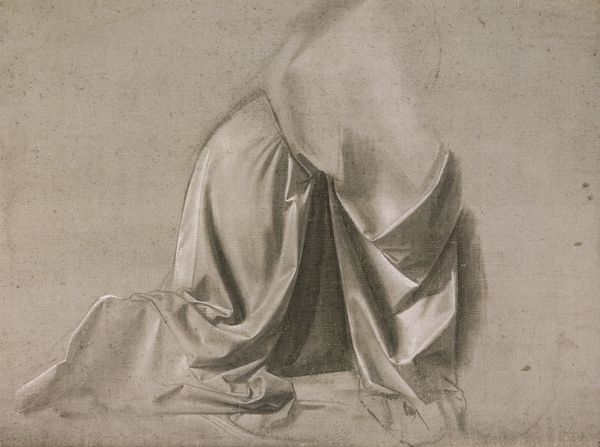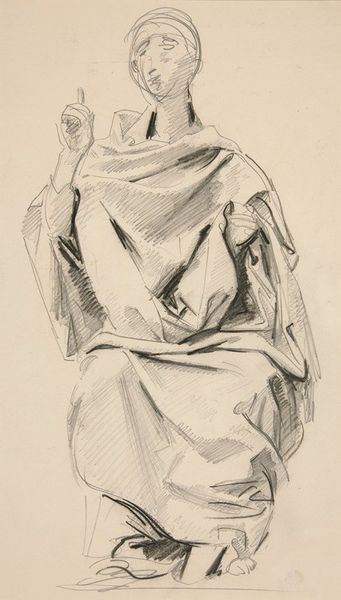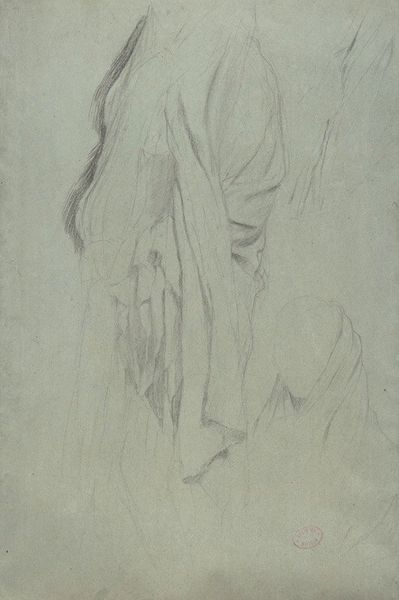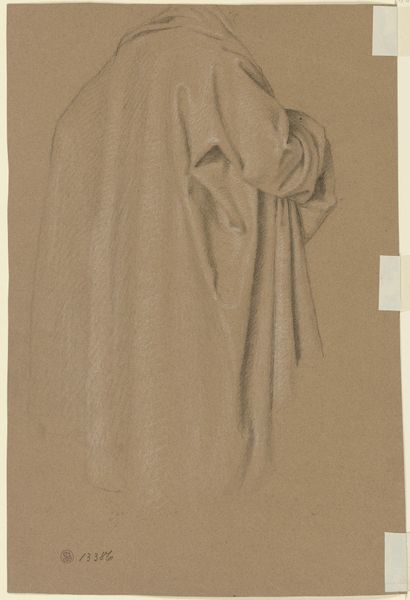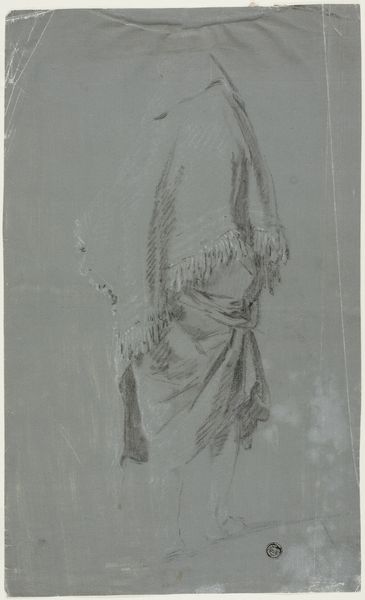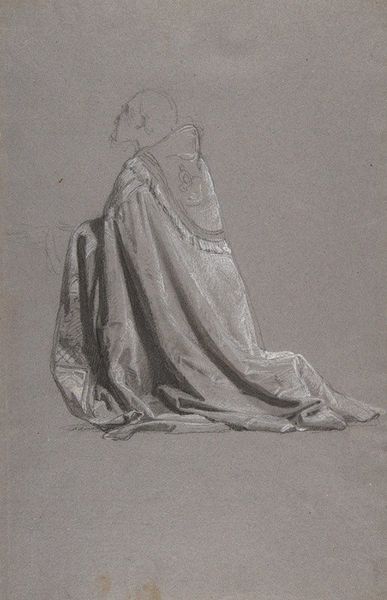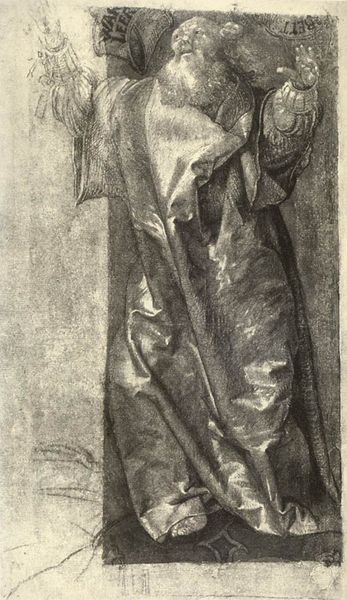
drawing, graphite
portrait
pencil drawn
drawing
pencil sketch
charcoal drawing
figuration
form
11_renaissance
detailed observational sketch
sketch
graphite
northern-renaissance
academic-art
realism
Copyright: Public domain
Editor: Albrecht Durer's "Study of Drapery," rendered in 1508, is arresting. It's a drawing – seemingly graphite, maybe some charcoal in there too – that’s so intensely focused on the folds and shadows, it’s almost sculptural. But what strikes me is that there seems to be an outline of the figure. What do you see when you look at this? Curator: Well, I see a disappearing act, don’t you think? Dürer isn’t merely showing us drapery, he is considering form itself. See how the heavy, cascading fabric, with all its insistent details of light and shadow, conceals a figure, yes, but what that concealment *means* is what I keep chewing on. And did you notice that tiny detail, the foot at the bottom, dangling out? Editor: Yes! The exposed foot adds another layer of depth. So the artist included just a portion of a real subject – almost as a way to provide an anatomical base for the robes? Curator: Exactly. Now, what if the subject's pose is of utter stillness – almost in the throws of meditation? Maybe the concealing nature of the drapery emphasizes, or even enhances, a sort of inner vision. See, this drawing serves both as a kind of meticulous study and, paradoxically, as a doorway into considering the deeper currents of stillness within us. Editor: So it’s not just about rendering fabric realistically. It’s about what the fabric *hides* or reveals about the person underneath and...about ourselves. The figure underneath seems to want to be found...or to vanish. Curator: Indeed. And maybe we’re invited to wonder whether we aren’t all draped, in a way, and if so, then how do *we* reveal or conceal ourselves from the world? Fascinating how a few lines can open a whole universe, right? Editor: Definitely. Now I understand why simple observations and renderings can speak volumes, Curator. Curator: That’s exactly why they make for incredible portals to deeper contemplation!
Comments
No comments
Be the first to comment and join the conversation on the ultimate creative platform.
